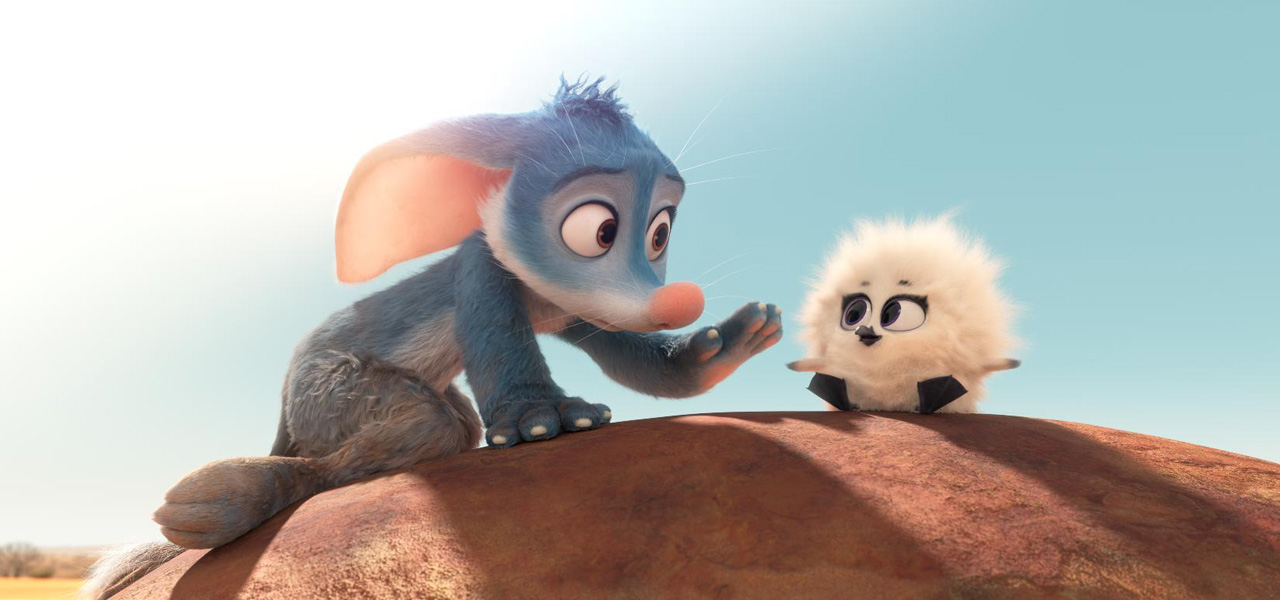
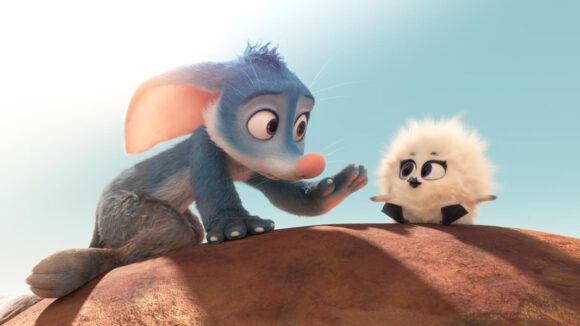
EXCLUSIVE: Dreamworks Directors On How They Made ‘Bilby,’ And On The Studio’s New Shorts Program
In addition to working on feature films, several animation studios have over the years dived into animated shorts, often as platforms for new directors to gain experience and also to test out new animation tools and techniques on a smaller production.
Dreamworks Animation announced last year that it would be starting a shorts program. Out of several pitches, one of the first to be completed is Bilby, directed by Pierre Perifel, Liron Topaz, and JP Sans. It came out of the cancelled Tim Minchin film Larrikins and tells the story of an Australian marsupial meeting a chick in the dangerous outback. It also riffs on the idea that just about everything in Australia wants to kill you.
Cartoon Brew was able to sit down with all three directors to discuss how Bilby – which was just awarded Jury’s Choice at the SIGGRAPH 2018 Computer Animation Festival – was made, how the shorts program at Dreamworks operates, and how it’s helped them move from animators to directors. The studio has also shared exclusive behind the scenes artwork and a clip from the short with Cartoon Brew.
Cartoon Brew: Coming out of Larrikins, how did this short manifest itself? What was the origin story?
JP Sans: It started with Chris deFaria. One of the first things that he did was greenlight this shorts program, which got us all excited. And on Larrikins, it was the first time that the three of us had worked together, on the same show – there was a chemistry and we kind of clicked. So as soon as it got greenlit, I remember Liron running to us and asking us to pitch something.
Pierre Perifel: We were all on the animation team [on Larrikins]. JP was a character supervisor for one of the main characters, I was head of animation, and Liron was a lead animator on the movie, and we had been working on the project from the beginning, really. Jumping from animators to directing was really a big step, though, because, even though we had kind of touched it with Larrikins, it was brand new on so many levels. First of all, in terms of storytelling, obviously, and then trying to understand and figure out the mechanics. Our story is really just a feature film type of story condensed into eight minutes.
Was it something you had to pitch or was it more an evolution out of Larrikins?
Liron Topaz: When the shorts program got announced, we thought it would be a great opportunity for us to tell the type of story that we wanted to tell. I think we were actually the last pitch to be in the program. We worked day and night trying to get it done in time and we basically drew all the storyboards and edited them together and we had the whole thing running, but we pitched it verbally .
How did that pitching process actually work?
Pierre Perifel: It was one of the first things that Chris deFaria did when he arrived. We had a big meeting with the whole studio where he said, ‘One of the things we’re going to start is the short film pitching program and we’re going to start it literally in the next two weeks.’ Just before pitching to him, you had to pitch to a crew of development executives. Then when you got into the last 20, you pitch it to Chris, and Chris is the one saying yes or no. It’s something that he wants to continue doing in the studio.
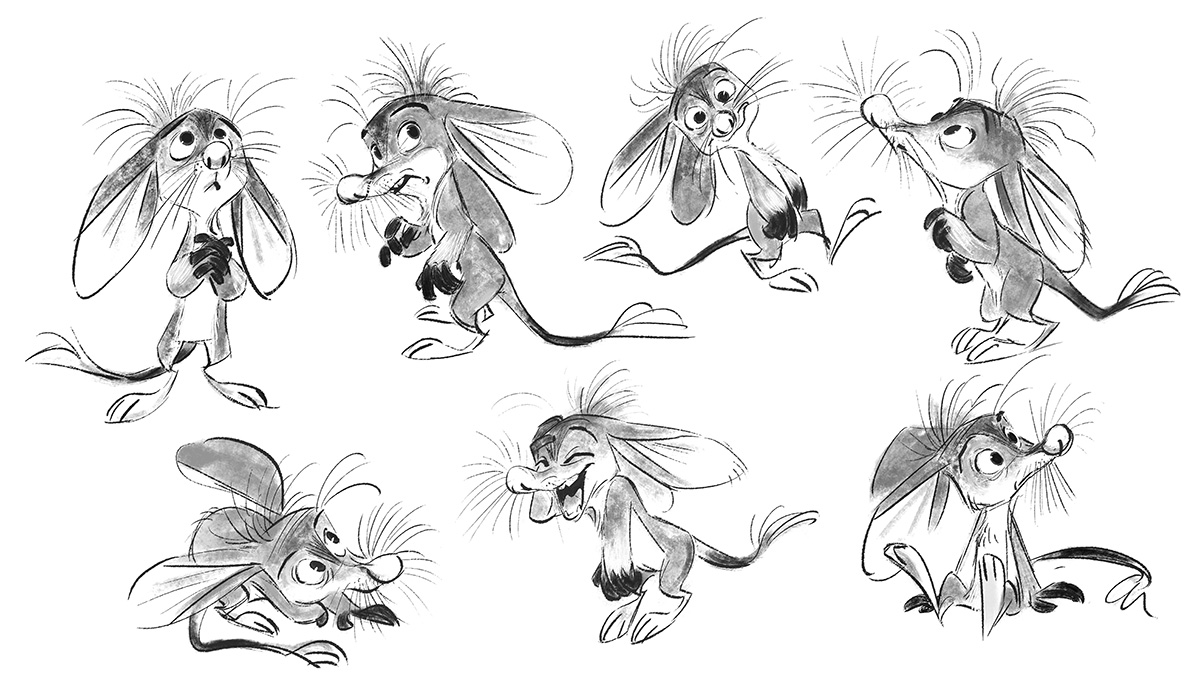
JP Sans: It was really nice and free because they let us, as filmmakers, create and have our own voice in the short. I think they let us really tell our story. We created kind of our own brain trust where we looked to the directors that we really trusted and we really admire to help us out. We would reach out to them and say ‘Hey, would you like to take a look at this? What do you think?’
What team could you put on the short? Was it the same team the whole time or were you pulling different people from the studio during downtime on other projects?
JP Sans: I think it was a little bit organic, where we would try to pull people when we could, when they were available. Obviously, it’s not the size of a feature. It was much more condensed and smaller, so one of the things that led this shorts program is giving opportunities to new artists to try new things and try exploring different kind of departments and roles, including us as directors.
After the pitch, how did you continue to find the story? Did it evolve or change much during production?
Pierre Perifel: When Liron came to us, he had an idea. And what we pitched was roughly exactly what you’re seeing on the screen. Of course, it got refined, it got revised, it got everything’d, but really I think the core of the story is exactly what Liron pitched to us.
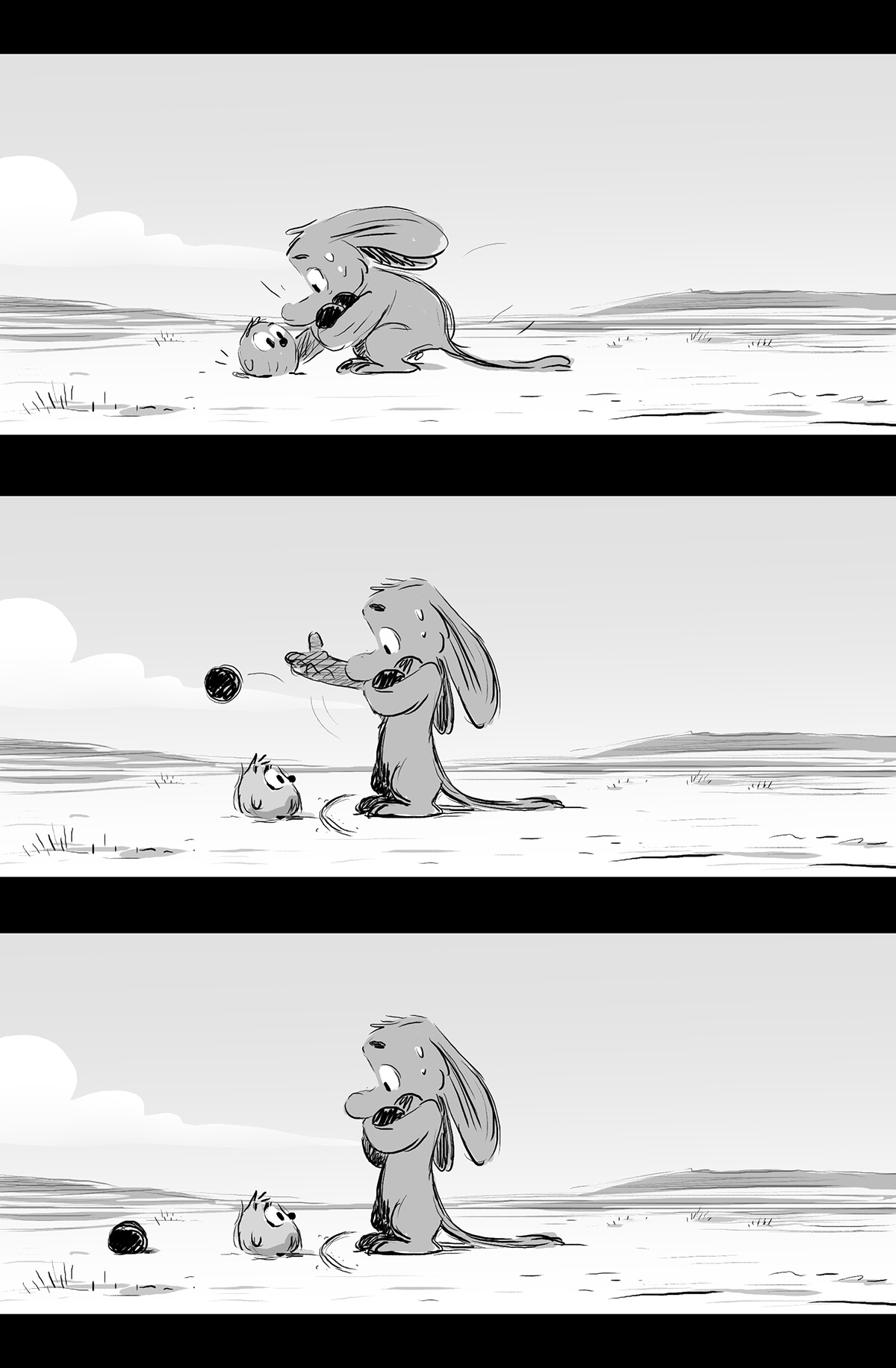
Liron Topaz: The main thing that evolved the most is probably the montage sequence [where the Bilby and chick seem to encounter everything in Australia that wants to kill you]. That part actually took probably the most time to plan because every cut and every idea and everything had to be so precise in order for that moment to work.
Some short film programs at other studios tend to also be used to test out new technology and new approaches. Was that the case with Bilby?
Liron Topaz: Absolutely. This was a big thing from the beginning. It was the first time that Dreamworks used our own proprietary software called Moonray to render the entire thing.
JP Sans: Moonray is a physically-based render engine and the result was stunning. We couldn’t have imagined it in a better way. Everything just popped and just looked so much better. What I loved about the render approach, and what lighting did for us, is that they didn’t just try to make it hyper-realistic, but they really tried to cast an illustrative look that we were going for and gave it a really believable render.
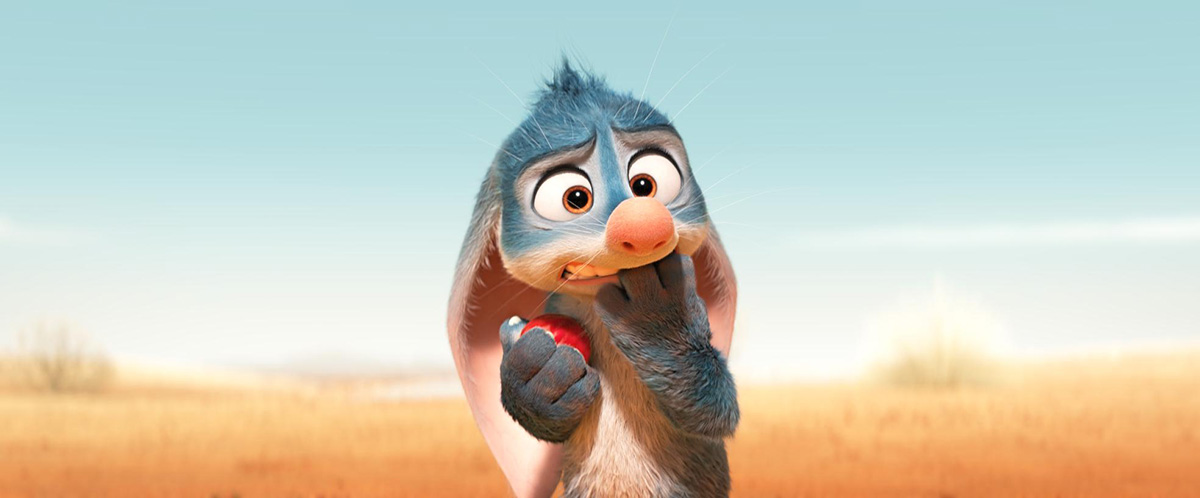
Liron Topaz: That rendering engine is going to get used from now on in our movies, so our short film was the testing ground where they would run into every single problem you can imagine. Well, not every single one – they’re probably going to meet so many more!
JP Sans: The other technology thing was the Locomotion system that Liron spearheaded. It’s a way that animators can work more efficiently with traveling characters, say walking or running, whatever character it is.
Liron Topaz: It was mainly useful because of the amount of characters we had and the amount of different tasks that we had, and I don’t think we would have been able to do them without that.
Pierre Perifel: We also developed a new wind system on the grass and on the fur, and we developed a system that allows us to pepper in some of the surface details on the ground, so that the ground feels rich without overloading the scene.
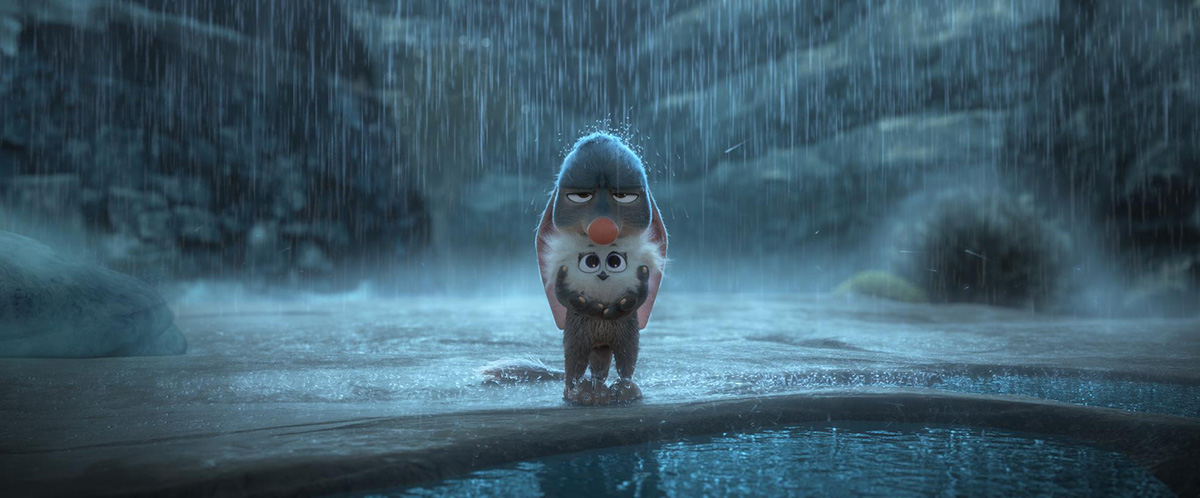
Was there something you discovered about the directing process after you’d finished Bilby that you were surprised about?
Liron Topaz: I think so, because, well, we all work in a big studio, and usually when you work in a big studio you’re kind of one out of many, you’re one out of a big production. And all of a sudden to have to steer an idea that you have from the beginning to the final product is very, very different. I think for all three of us, it’s ignited this creativity in us about telling stories, about developing ideas, about developing characters. For me personally, it reminded me of why I started doing animation, why I fell in love with this.
JP Sans: To add to that, for me it was the collaboration. Before directing, when I worked with directors I just saw them as: they have all the answers, they know exactly what to do, they know every step. But the collaboration aspect of it was super humbling. It got to a point that you trusted everybody around you to hit that vision and that emotion and that heart that we wanted on the screen.
Pierre Perifel: The last time that we actually made a movie ourselves was when we were students, and then you work on a big film like this and you get trained really, really well to do your craft as animator, visual artist, or whatever. And then you are confronted with the task of actually directing something and you realize that in the meantime, during those ten years, you learned so much about directing a movie that you didn’t think you did.
Bilby, and another Dreamworks short, Bird Karma (directed by William Salazar), both premiered at Annecy 2018.
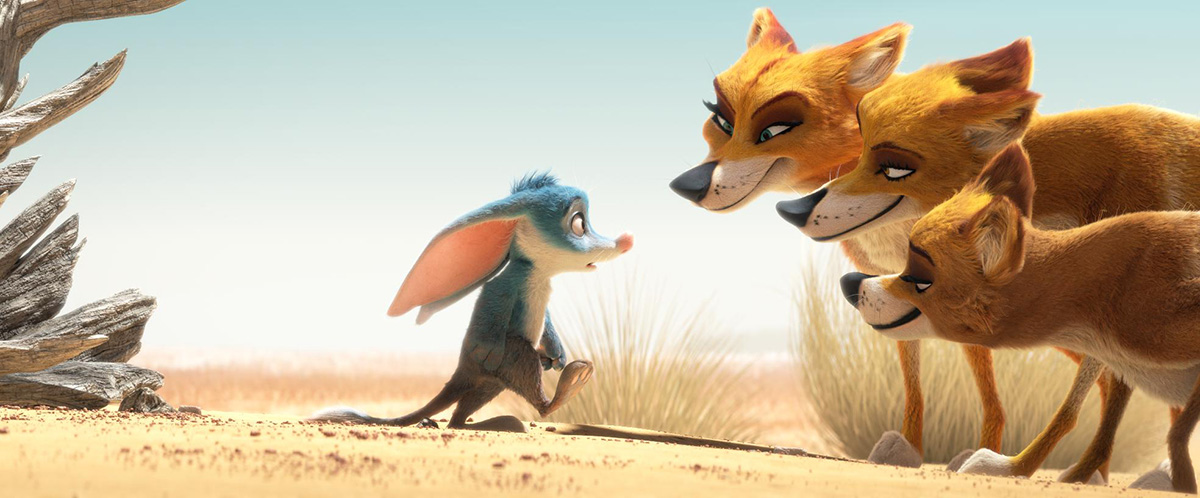

.png)